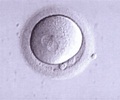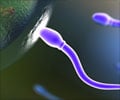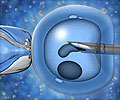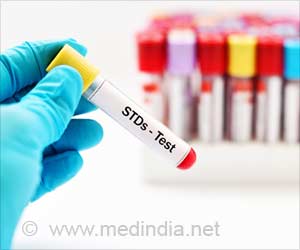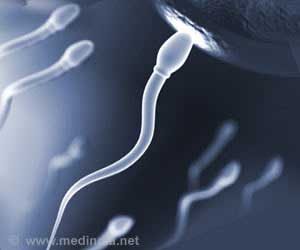Discovering a lock-and-key mechanism between sperm and egg cells, scientists may have moved a step further towards sparing infertile couples the pain, anguish and expense of fruitless IVF treatments.
In a significant step forward towards sparing infertile couples the pain, anguish and expense of fruitless IVF treatments, scientists have discovered a lock-and-key mechanism between sperm and egg cells.
Dr. Martin Brinkworth, a member of the team at the universities of Bradford and Leeds that discovered the lock-and-key mechanism, says that their work could help understand why so many couples with no apparent reproductive problems are unable to conceive.Apart from being expensive, in vitro fertilisation cycles may cause the couples opting them to face huge amounts of stress, and lead to depression and, in some cases, divorce.
"Our work has quite a lot of relevance for humans and society and one of the main ones is infertility," the Independent quoted Dr. Brinkworth as saying.
Some 15 per cent of couples have trouble conceiving, about half of them because the man has a problem. However, in only one third of cases is the cause obvious, such as a low sperm count, malformation or poor swimming ability. Consequently, 2 per cent of the infertile male population are left with no discernable reason.
Dr. David Miller at the University of Leeds thinks the secret could be that the genetic keys in their sperm don't quite fit their partners' locks.
"Our research offers a plausible explanation for why some sperm malfunction," he said.
His colleague Dr. David Iles added: "There is a definite pattern to the way DNA is packaged in sperm cells. It is the same in unrelated fertile men, but it is different in the sperm of infertile men."
The researchers believe once a procedure to identify such men is developed, up to a quarter of women who have intrusive fertility checks would be spared the procedures.
According to them, this may also decrease the 75 per cent failure rate of IVF by filtering out male candidates who have no chance of success, and being able to identify in advance all cases of male infertility may also save government agencies a lot of money.
Although the egg and sperm each supply half the DNA for the new baby, the egg provides all the cellular support systems, including enzymes and proteins.
Scientists have to date thought that sperm simply delivers the father's tightly packed DNA to the egg, leaving control and regulation of the process to the mother's DNA.
However, the new research has found that some genes are left exposed in sperm, in an "open conformation", allowing them to play an important role in the development of the embryo.
"It contradicts the dogma that the egg does everything," said Dr. Brinkworth, a senior lecturer at the University of Bradford.
Writing in a paper published in the journal Genome Research, the researchers have revealed that the molecule at the heart of the lock-and-key mechanism is a protein called CTCF.
"CTCF sets the stage during sperm development. And open bases can be recognised by CTCF in the egg," said Dr Iles.
The researchers have found that CTCF protects some histones in sperm-molecules that play a role in turning genes on so that their coded instructions can be copied and sent to other parts of the cell-from being replaced, leaving about 4 per cent of the genome in an open conformation, so that its instructions can be copied.
Given that the pattern of exposed areas is not random, the researchers believe it must have a purpose, and the simplest explanation is that it is a key that influences the developing embryo even before the father's genetic contribution has been unpacked.
Although the bulk of their work involved 50 million human sperm cells from several donors, the researchers also found similar structures in mouse sperm.
They believe that the lock-and-key mechanism may improve their scientific understanding as to how closely related species maintain their separate identities, even when individual members have sex.
"DNA from different organisms can be extremely similar. Why do they not produce offspring, or if they do, why is it sterile, like mules and donkeys?" said Dr. Iles.
Source-ANI
TAN





